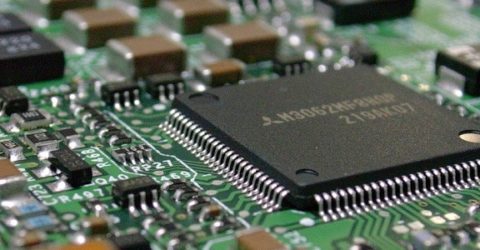What are the main components inside a computer?
Computer components can seem mysterious to the uninitiated, yet each one performs a basic – and essential – task

To anyone unfamiliar with computing, the inner workings of a PC or Mac might seem mysterious.
It works somehow, but the whys and wherefores are unknown.
It’s tempting (though misguided) to presume an all-in-one monitor will have different computer components to a tower PC, given the size disparities between them.
Despite obvious specification differences between desktop computers and other variants, the computer components within each chassis are broadly comparable.
Alongside power sources and cooling fans, these are the key elements located under your device’s plastic or metal cover…
Motherboard
Computer components clip onto a complex circuit board at the heart of the device, known as the motherboard.
As well as distributing electricity to each component, the motherboard has a finite number of ports into which components can be inserted (or removed for replacement/upgrade purposes).
The silicon spine of each motherboard is known as a chipset, and modern variants tend to handle formerly-outsourced tasks like Bluetooth and onboard audio.
RAM
Random Access Memory is a high-speed storage solution that allows computers to access data temporarily – such as text in an open Word document.
It’s called ‘random’ because any part of the storage is accessible at any point, unlike sequential access memory platforms like audio cassettes.
Transistors and capacitors handle data while it’s in use, but discard it once it’s no longer deemed necessary. They do this in a few billionths of a second, over and over again.
Storage
Traditionally, hard disc drives contained spinning magnetic plates which could be read from and written to using a spindle akin to the needle on an old record player.
Today, laptops and all-in-one devices (along with many desktops) have adopted solid state drives, whose storage is located on transistors which require no moving parts.
This makes SSD storage far more robust and reliable than spinning drives, which could be damaged or destroyed by component failure. SSD read/write speeds are also far superior.
CPU
Along with its GPU cousin, discussed below, a computer’s central processing unit is its brain. It interprets information, interacts with other components, and controls peripherals.
Every binary instruction (zero or one) is decoded and analysed by a CPU, with billions of microscopic transistors ‘remembering’ things and actioning instructions accordingly.
The number of cores a CPU has determines how quickly it works, so an octo-core processor will be faster than a quad-core. CPUs are manufactured by two firms – Intel and AMD.
GPU
A graphics processing unit is effectively a streamlined version of a CPU. Originally intended for graphics rendering, they now undertake more diverse roles.
GPUs perform calculations at speeds CPUs could only dream of, but they’re effectively unable to multitask.
A CPU will display information on a monitor while sending a PDF to print, whereas a GPU will process the individual pixels required to render detailed in-game graphics in real time.
What about older devices?
Older machines had a variety of components which are redundant in the modern age.
These included CD-ROM drives – necessary for program installation and storage in an age before high-speed internet connectivity allowed us to download or cloud-host programs.
Noughties computers might sport ZIP or floppy disc drives, usually referred to as A: or B: drives.
There’s no need for dial-up modems in the age of full fibre broadband deals, when data is pre-interpreted by routers before being piped into our PCs and Macs.
Similarly, many traditional connection ports (VGA, parallel, PS/2, serial) have become superfluous thanks to the widespread adoption of USB-C and HDMI cabling.






